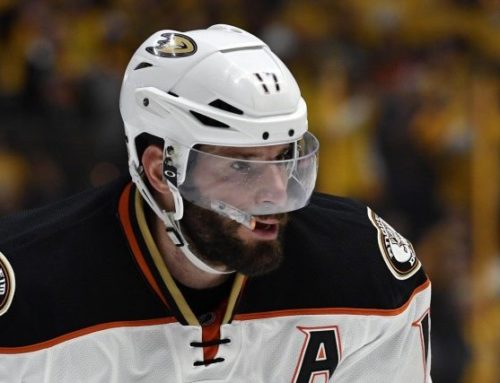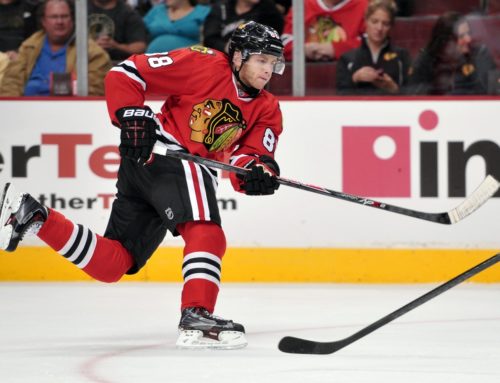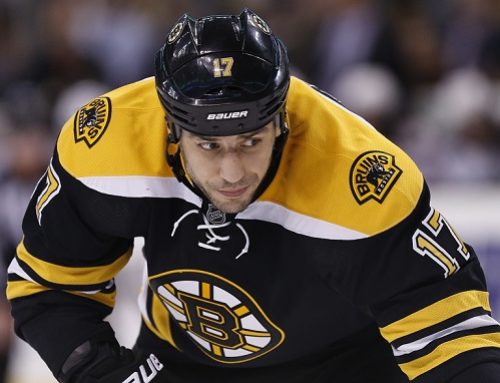
What to Watch For: An Introduction Pt.I
What to Watch For: Six Sources of Struggle Pt. II
What to Watch For: Mental Focus and Strength Pt. III
Take a look at current rankings for the upcoming season and Roberto Luongo’s name is almost always atop the pecking order for goalies. Nothing less than 40 wins from him on the season – that’s what they say you can expect. The usual analysts all say the same thing – Luongo will bounce back from last season’s dismal final stretch because his minutes will be better managed by having Curtis Sanford play more games. This will ultimately keep Luongo primed for better numbers and more playoff success, or so they think. But please, before you cement him as your No.1 goalie of choice, take this week’s lesson into account as we dissect his game and evaluate his mental blueprint for the upcoming season.
Goalies are a living archetype, meaning themes and lessons can be learned from every single career. Certain aspects, such as certain games or specific moments act as the epitome of their entire career, giving you insight into other goaltenders in similar situations. This is not just a psychological aspect of fantasy hockey analysis that comes into play for all positions, but for goalies it’s actually a very vital piece of the puzzle.
For Luongo’s sake, I’m sure you conjure up at least some kind of memory where a 50-save behemoth performance ends up in a tragic loss. I mean, what other way is there to describe his career other than saying he’s been dragged through the mud by the lack of competency in front of him? Just one morsel of proof that this tragic downside is real takes place within the story of a career-high 57-save performance in a 3-2 OT loss to Detroit on February 27, 2002.
Nevertheless, Luongo’s undeniable big-save ability, his durability, stamina and large frame solidifies him as one of the top three or four goalies chosen in fantasy drafts. But once in a blue moon, my research actually ends up in the freaky realm of numbers. I hate numbers because they distract me from focusing on goaltending. But Luongo is the perfect time for the blue moon to rise on up, so bear with me as I break it down. This process is the foundation of Luongo’s blueprint for the upcoming season, just one technique you can transpose to any other professional goalie.
Let’s start with Luongo’s increased amount of games played and shots against in his five seasons in Florida. From the 2000-01 to the 2005-06 season, Luongo played in 47, 58, 65, 72 and then 75 games and faced 1333, 1653, 2011, 2475 and then 2488 shots against in each season respectively. His average shots against per game also went up in every season except for the final one, which is where the blueprint begins to form. Luongo faced 28.4, 28.5, 30.9 and then a whopping 34.4 shots per game over 72 games in the 04-05 season before dropping to only 33.2 shots per game in the 05-06 campaign (his last before the trade to Vancouver).
Now the 2003-04 season (his fourth in Florida) was when Luongo’s game really seemed to peak. In 72 games played he faced 34.4 shots per game, which is the most in his career, yet was able to post his best goals against average in Florida at 2.43 and a .931 save percentage. Simply put, the more rubber Luongo was seeing, the better he was playing. Luongo’s final season in Florida resulted in him playing three more games (75 up from 72) yet facing one shot less per game (33.2 down from 34.4) on average. So what was the result of his game, at least statistically? It was a 2.97 goals against average (up from 2.43) and a .917 (down from .931) save percentage. Sure, it may have only been one shot less per game, but when a young elite goalie develops his game by seeing more and more shots on average every season, a sudden drop in shots against and minutes played will almost always result in a drop in production.
So sure enough, when the big trade to Vancouver was made, the stars were aligned and the Stanley Cup playoffs were poised to become a reality. This was the season that really proved Luongo’s dominance in the crease, as his MVP-quality play down the stretch pushed his game to another level. Luongo played in a career-high 76 games but only saw an average of 28.5 shots per game, tying his second-lowest career mark. He responded with a career-low 2.29 goals against average and a stellar .921 save percentage. Ultimately, the prophecy was fulfilled and Luongo’s performance in the first-round series win against Dallas became the true pinnacle of his career.
But oh how different things look just over a year later. With 47 wins during the regular season and a succulent draw from the post-season mug, Luongo struggled to finish with 35 wins last season and his playoff experience became nothing more than a midsummer’s night mirage. Luongo played in fewer games (73 down from 76) and faced fewer shots (2,069 down from 2,169), yet his goals against average went up from 2.29 to 2.38 and his save percentage (.921 to .917) went down. Once again, when Luongo saw less rubber than the previous season, he seemed to have a decline in production statistically and mentally.
Just take the stats for what they’re worth – honestly all I would really take from it is the eerie notion that comes with realizing that Luongo is poised to play less games and in previous times in his career when this happened, the result was not a productive one. When you didn’t see the type of focus in the final stretch from seasons past in Florida, when he would fight with tooth and nail to the bitter end, that had to set off alarms in the minds of many. So whether you want to believe this drop in production is completely due to the lack of scoring and consistent defensive support in front of him or not, Luongo was still clearly not the same goalie as he was in the 2006-07 campaign.
And now you see the real issue – the blueprint has been created. Most analysts say Luongo stands to benefit from playing in less than 73 games this season and I’m showing you a pattern that has him destined for another decline in play if that happens. For all of the talk about Luongo’s lack of help in front of him, in all honesty, the 28.3 shots per game he saw last season was the LOWEST MARK IN HIS CAREER! Every other season, Luongo actually faced more rubber and ultimately played better. If he really does end up playing in 65-68 games in front of an improved defense, there’s good reason to believe he could struggle to play consistently game in, game out.
So if you’ve followed my logic, you understand that any goalie’s blueprint must take into account the entire scope of their career. This gives you a good idea of their mindset heading into season, not just the numbers they had from a season ago or where a goalie collectively seems to fall on draft lists and player rankings. Analyze their personality alongside your number-crunching. We did this above and were able to decipher a characteristic of his game – his need for consistent work and a lot of action early and late in the season. This happens to clash with what the general media seems to believe is good for his game, so there’s a big decision to make when it comes time to drafting. Maybe this article hasn’t changed your perception of his value at all – but at least you can take this method of goalie analysis and try it with every other goalie in the league.
Part V will close with the topic of team atmosphere, as we narrow our focus in the specific goalie. For example, who has more upside for the new season – Mathieu Garon or Luongo? Luongo is higher up on draft lists – but there’s no way you can lead me to believe that Luongo is guaranteed to play better starting October 10. Just take a look at the atmosphere – Garon has just taken over the starting role in Edmonton and Luongo is coming off a lousy and unsuccessful late-season playoff run.





 FLA
FLA CHI
CHI NYR
NYR PIT
PIT L.A
L.A COL
COL PHI
PHI CAR
CAR VGK
VGK ANA
ANA N.J
N.J WPG
WPG VAN
VAN TOR
TOR

